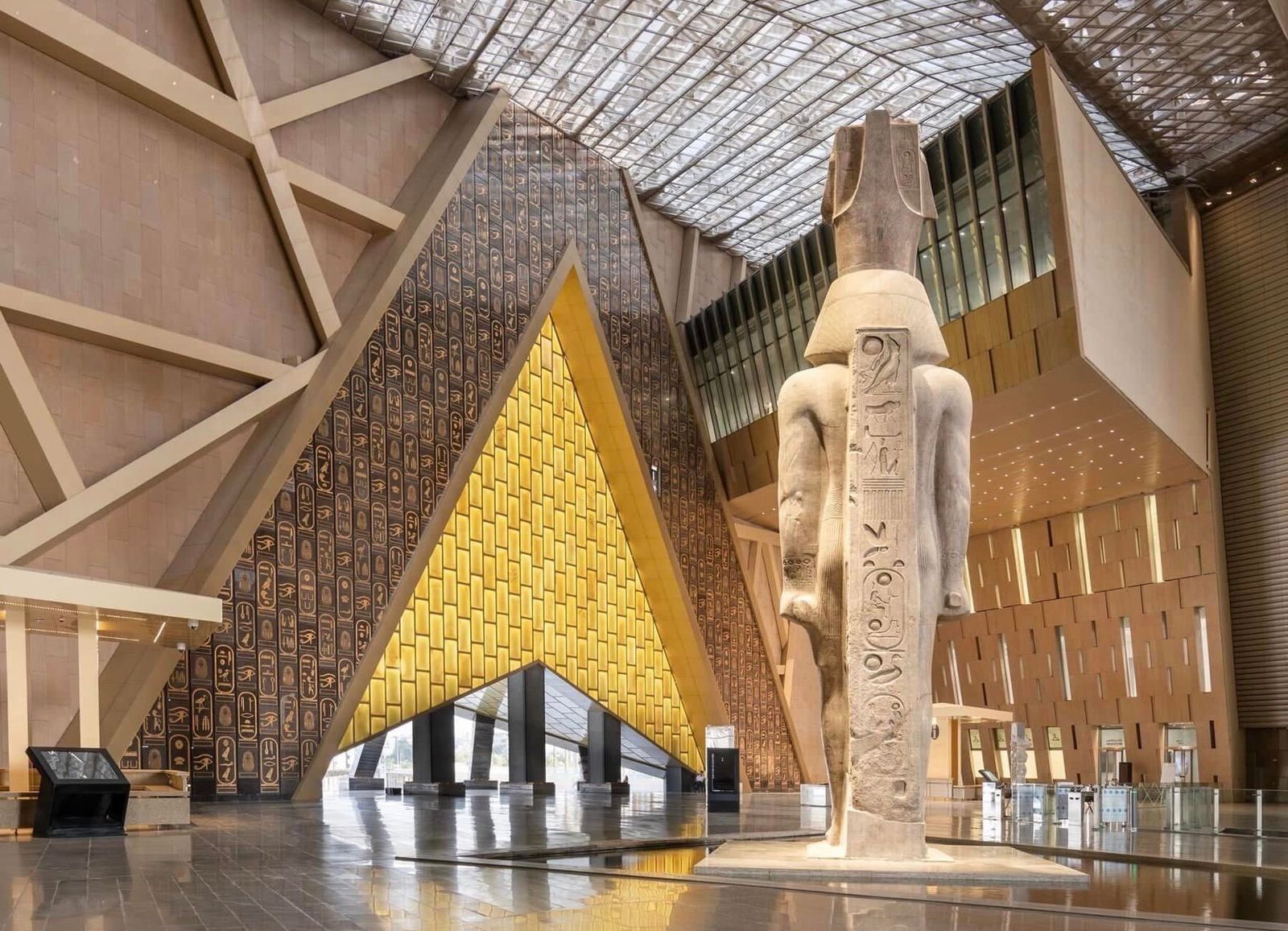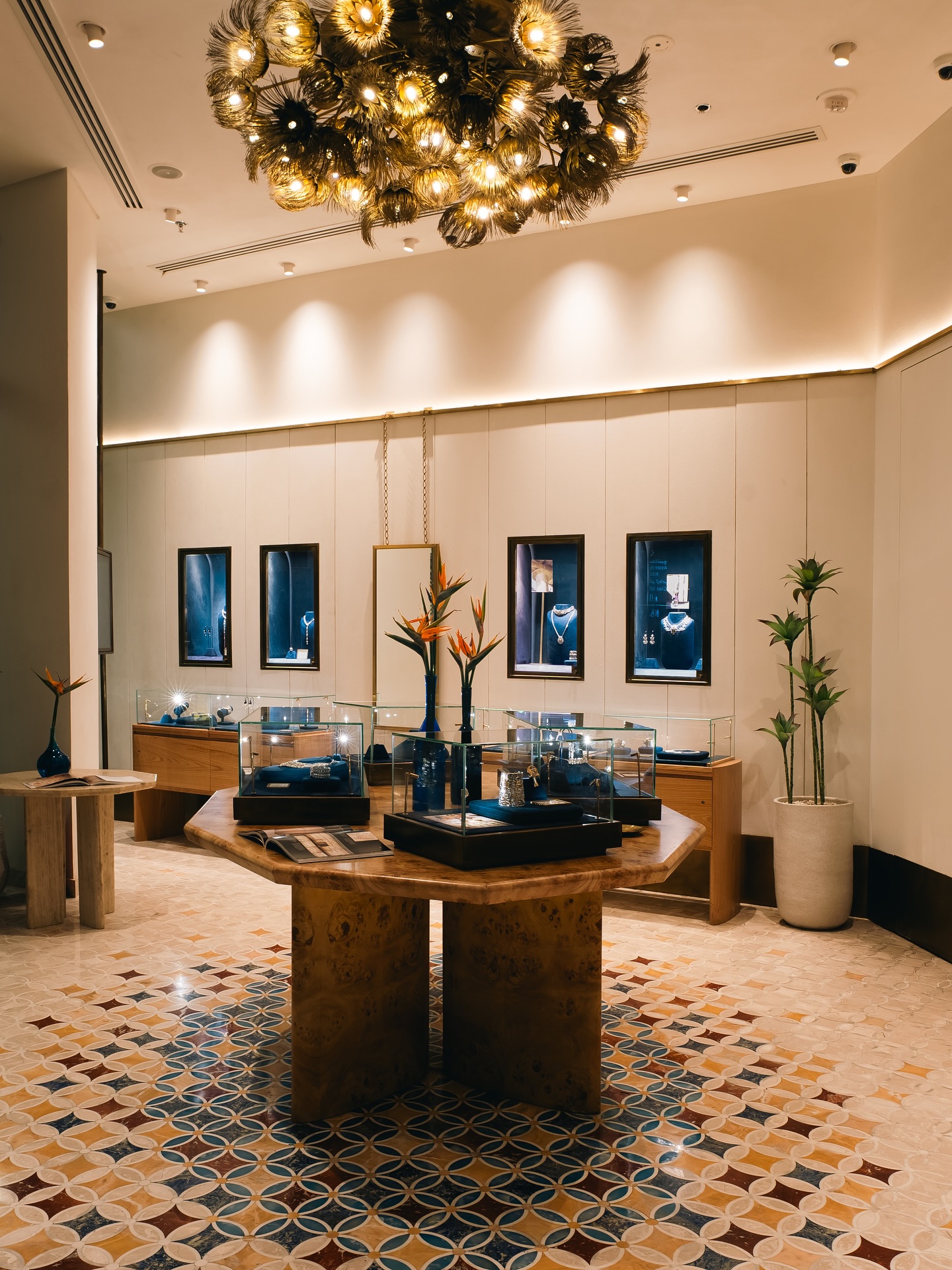The long-awaited Grand Egyptian Museum (GEM), the world’s largest archaeological museum complex dedicated to a single civilization, is set to officially open its doors with a grand ceremony on Saturday, 1 November, 2025, near the Giza Pyramids Plateau in Egypt.
After over twenty years of planning, construction, and delays, the museum is set to transform how visitors experience ancient Egyptian history, with a new tourist walkway that connects the GEM to the Pyramids of Giza, letting visitors stroll between the two landmarks.
Below is a breakdown of its history, purpose, key features, and what to expect from the grand opening.
A Brief History of the GEM
Acknowledging the limitations of the Egyptian Museum in downtown Cairo, the concept for the GEM emerged in the late 1990s as part of Egypt’s broader vision to modernize and expand its cultural infrastructure.
Construction officially began in 2005, with the goal of creating a state-of-the-art facility to house Egypt’s vast collection of artifacts. However, the project faced numerous setbacks, including funding challenges, political instability following the 2011 Arab Spring, and technical issues.
After over USD 1 billion (EGP 47 billion) in investment, funded through international cooperation, notably with Japan’s International Cooperation Agency (JICA), the museum is now ready to welcome visitors and will be open to the public on 4 November.
In 2024, the GEM received the EDGE Advanced Green Building Certification from the International Finance Corporation (IFC), becoming the first museum in Africa and the Middle East, and one of only a few worldwide, to earn this recognition.
The certification highlights the GEM’s innovative, climate-smart design and construction. These measures enable the museum to cut energy use by more than 60 percent and reduce water consumption by 34 percent compared to similar buildings.
Spanning half a million square meters, the museum integrates a range of sustainability features, from a reflective roof and external shading for thermal comfort to energy-efficient lighting, water-saving fixtures, and smart meters that monitor consumption in real time.
Why Was the GEM Built?
The GEM was built to address the limitations of the historic Egyptian Museum in downtown Cairo, which has been overcrowded and outdated for decades.
With Egypt’s tourism industry booming, there was a need for a larger, more modern space to showcase over 100,000 artifacts spanning 5,000 years of Egyptian civilization.
Located just 2 kilometers from the iconic Giza Pyramids, the museum connects visitors directly to the ancient wonders through the new tourist walkway.
More than a museum, the Grand Egyptian Museum also highlights Egypt’s local creativity, featuring brands like Azza Fahmy Jewellery and Nakhla Jewellery, both inspired by the elegance of ancient Egyptian design.
To celebrate the opening of the Grand Egyptian Museum, Azza Fahmy Jewellery is launching a special exhibit in its museum boutique that highlights the brand’s long-standing ties to Ancient Egyptian heritage.
Key Features of the Museum
Inside, visitors will find the complete collection of King Tutankhamun’s treasures, over 5,000 items, displayed together for the first time in history, including his famous golden mask and throne.
Beyond the galleries, the GEM also includes public spaces with retail shops, local dining options, and landscaped gardens, making it a full-day destination for families and tourists alike.
What Will the Opening Include?
The official inauguration on 1 November is expected to be a star-studded event attended by global leaders and celebrities, with at least 60 kings, presidents, and prime ministers attending.
A short video recently went viral on social media, capturing the moment celebrated Japanese Egyptologist Professor Sakuji Yoshimura received a gold-embossed invitation from Egypt to attend the GEM inauguration.
To mark the occasion, Egypt has declared a special public holiday, and exclusive gold and silver commemorative coins will be released.
The public will gain access starting 4 November, coinciding with the 103rd anniversary of the discovery of Tutankhamun’s tomb.
Visitors can expect guided tours, special exhibitions, and interactive programs right from the start. The full opening will unveil all 12 main galleries, including the highly anticipated Tutankhamun Gallery.







Comments (0)